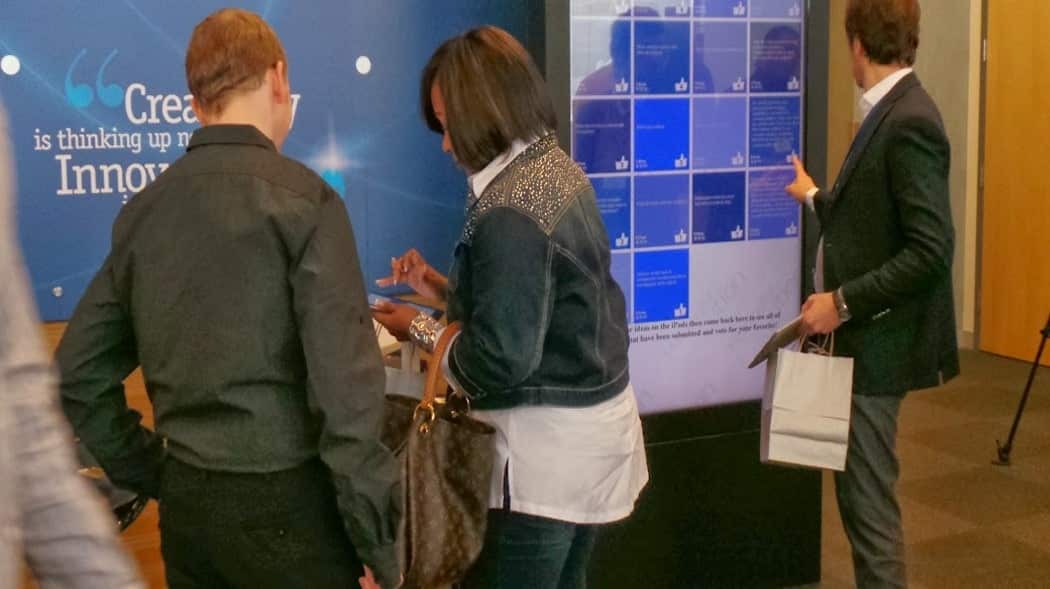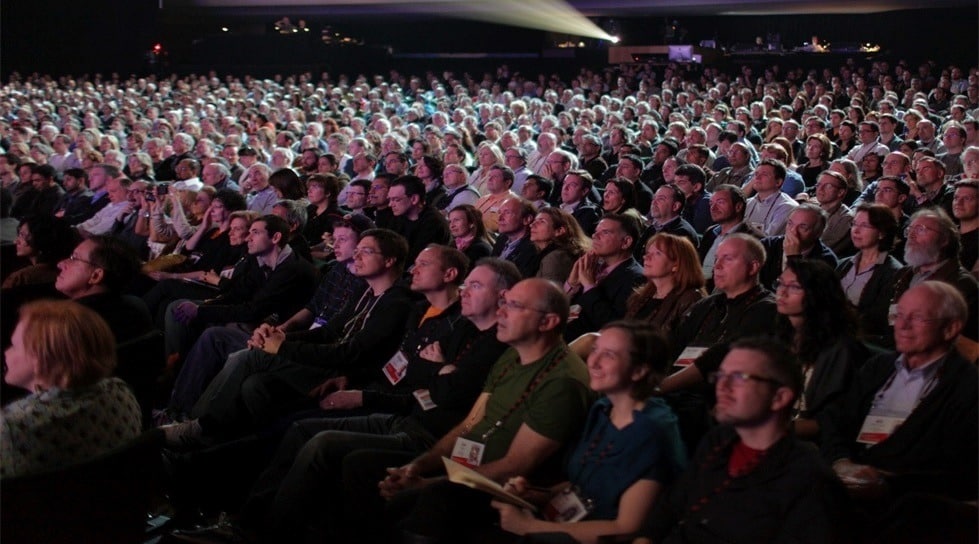5 Ways to Create Audience Participation in Presentations
How many presentations have you attended that could have been delivered more effectively as an email?
You know the drill.
The speaker unleashes a tidal wave of PowerPoint slides with graphs and charts going every which way. It’s hard to pay attention. They rarely ask questions or solicit feedback to involve the audience. To add insult to injury many speakers will read the slides.
That’s bad. Really bad. Because the world has changed, and so have your audiences.
Not including time for audience engagement in your events and presentations might have worked in the past, but today’s audiences have higher expectations of being involved with learning and interacting. So, you need to make the time! Just consider how audiences have become more hands-on in reaction to major recent changes:
20 years ago – Internet searches and YouTube videos:
About 20 years ago Amazon.com was created, kind of when the Internet got really popular. Today, when my friends or my brother and I have an argument about who’s the best sports athlete we don’t just guess – we Google search it to see who is right. And, we Google it on our smart phones. You probably do that, too. And when I need to fix the dishwasher, rather than call a plumber, I go on YouTube to find videos. You probably do that, too, and so do your audiences. Do-it-yourself videos have changed your attendees’ behavior.
10 years ago – Mobile/Social enables content creation, sharing, collaboration and critiquing:
When the iPhone came out about 10 years ago that really started a social mobile revolution. Now, where I live in Minneapolis Minnesota, over 85% of the people have smartphones! That means 85% of the people are content creators, because the phone in their pocket is a tool for creating content and sharing that content. They don’t need anything else. They have the tools and experience to create content and share or critique it or collaborate with others about it.
Today – More people with advanced education:
In the United States there are more college and master’s degrees per person than ever before. In the last 20 years the number of U.S. master’s degrees has more than doubled. And the number of college degrees per capita went up over 40 percent. The number of secondary degrees is the highest ever. That means your audience is more educated, so you’ve got smart people in the room. With Audience Response Systems (ARS) you have a way to Google them and get them involved in what you’re trying to do, rather than force them to just sit and listen.
If you think that you don’t have time in your program, you better make time! Because your audiences have the tools to figure out what the answers are to their problems and go solve them. You’re better off using that audience collectively, engaging them to create something greater, instead of just having a speaker and leaving all that brainpower and willingness left fallow.
So, you don’t have to be the person who drowns your audience under waves of PowerPoint slides. Instead, follow the suggestions below to get your audience involved and help them pay attention to you!
1. Schedule audience participation into your presentation
Yes, you need to plan audience interaction in your presentation. I would recommend 10-20 minutes.
Why? Because attendees stop paying attention after 10 minutes AND your presentation is probably the third one of the day. They can only take so many graphs and charts.
If you can get them to consider rhetorical questions, participate in small group conversations or ask you questions, then you will win.
2. Help people participate during your presentation
For audience interaction – speakers should inspire the audience to act.
When we looked at the reasons people attend conferences words like Try, Share, Meet and Discuss bubbled up to the top.
Along those same lines the key audience participation words are ask, answer, poll, rank, vote, play, capture, collect, discuss, display, share. Notice: “sit and listen” are not on the list.
These are the actions that you can inspire your audience to take.
3. Think about attendee engagement as “Googling the audience”
If your audience could answer questions for you as quickly as Google – what would you ask them? What questions should they be asking themselves?
Here are 10 questions senior leaders should be asking but are afraid to ask.
4. Create a feedback loop
A feedback loop is a way to take all of the small engagement conversations and bring them back to you the speaker. This might be through live polling results, conversation recaps, Q&A, word cloud or some other technique.
For example, sometimes speakers ask the audience to discuss a ___________ that ____________ (example: discuss a leader that inspires you). Then, attendees form groups of 2-3 and talk for a few minutes. Where does that conversation go afterward? Is the information fed back to the audience? Or do they keep it themselves? Savvy presenters will ask someone to share these conversations.
5. Consider Live Polling, Interactive Q&A or Interactive Trivia
If you have a large audience, then Live Polls, Interactive Q&A or Interactive Trivia would be a great way to get people involved with you.
If your event is not providing an event app, then you may consider an audience response app to scale up your audience participation and attendee engagement. There are several options available and most have a basic interactive Q&A and Live Polling feature. Solutions like SocialPoint include the Interactive Trivia.
Also, these audience response apps have live results displays so you can create a feedback loop. Yeah!
If you don’t know how to use the technology read this guide: How to Prepare Your Speakers to Use Audience Response Apps.
The Big Finish
Don’t let your next presentation be a tidal wave of PowerPoint slides. Incorporate 10-20 minutes of audience participation activities into the presentation. We promise that you will see the results in your post-event feedback forms.
Have an awesome next event!
If you need game ideas to increase audience and attendee engagement in your events and trade show booths try our game selector tool below. It will help you generate more fun, excitement, and results.








